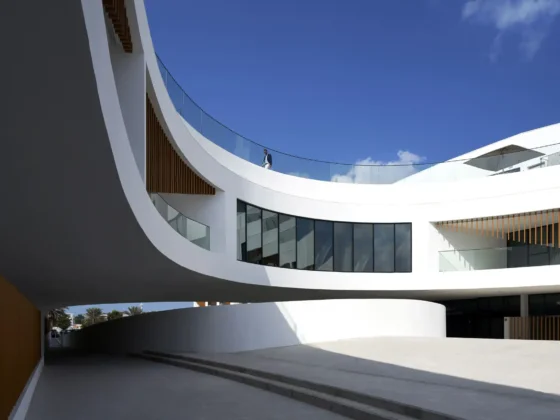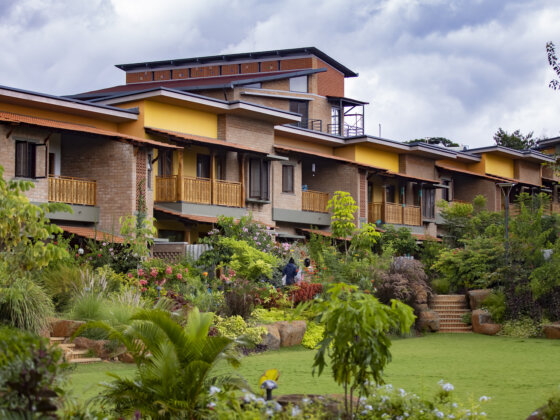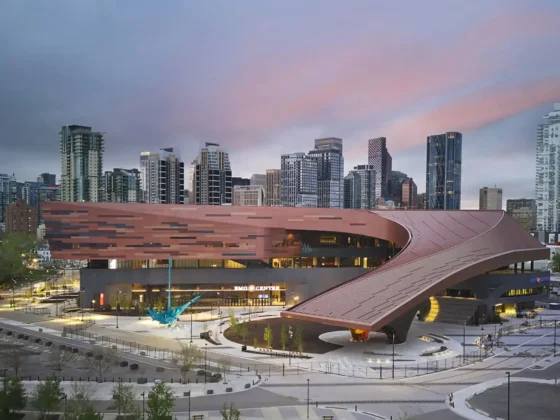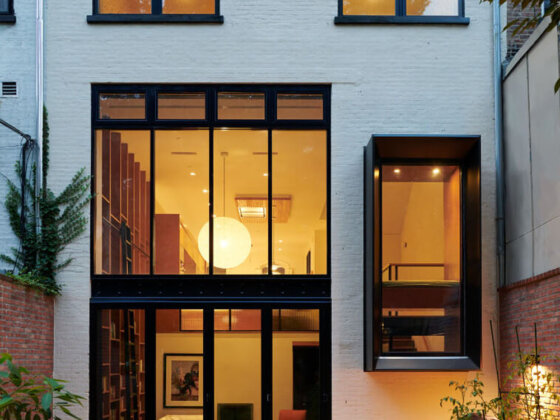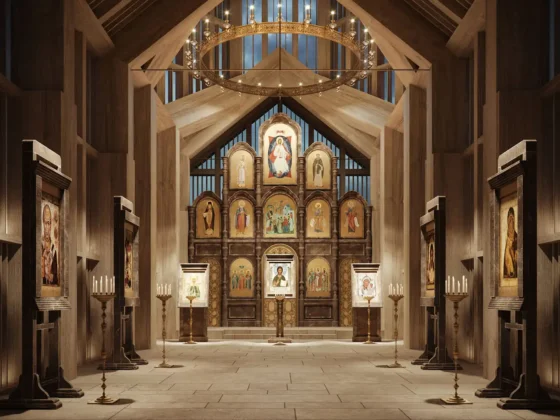Luzhou, Sichuan, China
Desiring to upgrade The Erlang Liquor Storehouse of Langjiu Estate, Langjiu Group called on Sichuan Langjiu Group architects and Design Creates Atelier to renovate and create a world-class liquor estate in Erlang Town.

Τhe project has been awarded a 2021 International Architecture Award by The Chicago Athenaeum: Museum of Architecture and Design and The European Centre for Architecture Art Design and Urban Studies.
The project site is situated in Erlang Town, Gulin County, Sichuan Province of China, which is the original place of Langjiu Liquor, one of the two most prestigious soy-sauce scent Baijiu in China that is produced alongside the Chishui River.

Technically, the Liquor Storehouse is an industrial building that stores the distilled liquor in traditional pottery jars; however, as the first project of the Langjiu Estate, the architects imagine the Storehouse is more than an industrial building, and it is necessary to reduce its characteristics as an industrial building to some extent through restructuring its stereotypical image and functions.
The architects believe that design must respect the specific site’s environment, since the Storehouse is nestled in a valley of multiple levels.
In order to accommodate the height difference, they carefully design functions on different levels through minimum adapting the original site. In this way, the Storehouse is naturally integrated with its surroundings and becomes part of them.

The architects believe the Storehouse is a modern expression of oriental culture, local culture, and liquor culture, not merely a common industrial building; therefore, the terra cotta brick is used on the facade. Basically, it has a kind of inherent connection with the pottery jar because they are made from the same material.
The earthy color and facade pattern of the brick also highlight the introvert and serene quality of the Storehouse.

In addition to this, some local architecture elements are used in the facade design.
The architects believe the Storehouse is not only storage space but also a place for visiting and experiencing.
Thus, they design a visiting path to connect those experiential nodes in the Storehouse and to wind through the whole Langjiu Estate at the very beginning of the design.
In order to deal with huge height differences on-site, the architects designed an elevated boardwalk, sightseeing elevator, escalator, and terraced roofs along the meandering path, which enables visitors to walk through the Storehouse without interfering with the storage space.

Good architecture is supposed to have its unique sense of experience, specific attributes of place, outstanding cultural context, and contemporary features, and be capable of arousing the desire of resonance and conversation from visitors.
The architects believe the Storehouse is exactly such a good architecture that deserves to express that uniqueness and attributes in the architectural design.
The Giant Jar, built with about 150,000 pcs of terra cotta bricks, is the biggest feature and eye-catching point of the Storehouse.
Its elaborate construction is not only an expression of the craftsmanship spirit of Langjiu but also an architectural language communicating with people.
The perforated brick wall and fenestration ensure fresh air freely flow through the building, which provides an ideal microbiological environment necessitated by liquor storage and keeps alcohol concentration in the indoor air at a safety level.

The roof water pool is popular in local residential houses, so the architects bring it into the project.
The pool becomes part of landscape design and cools down indoor temperature in hot summer.
In this way, the Storehouse provides an ideal storage environment for the liquor in a natural and sustainable way.


Project: The Erlang Liquor Storehouse of Langjiu Estate
Architects: Sichuan Langjiu Group Co., Ltd.
Lead Architect: Xiaoguang Lin
Design Team: Qiang Chen, Gaofeng Li, Caiping Yang, and Yuyan Zou
Associate Architects: Design Creates Atelier
Client: Sichuan Langjiu Group Co., Ltd.
General Contractor: Sichuan No.1 Construction Co., Ltd.
Photographers: ARCH-EXIST, Xiaoguang Lin, Li Zhou, and Kai Wan



